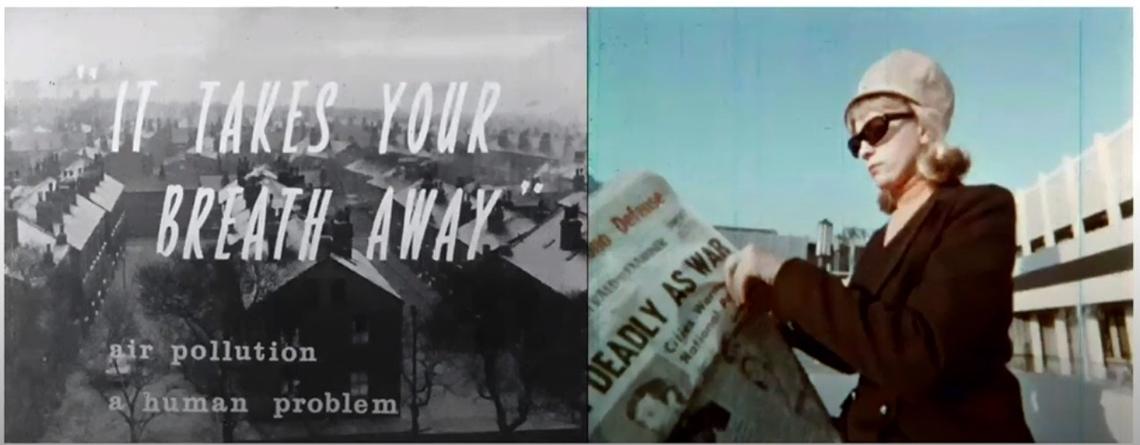History on film
Scholars Study History of Pollution Activism

Donora, Penn., 1948. London, England 1952. Mist mingled with pollutants in the air, settling over the streets, so dense that visibility was severely limited and driving was unsafe. At first, people attempted to continue their everyday lives. Then, the health complications started.
Twenty people died during the Donora Smog, with more deaths in the years following that were associated with complications from the event. London’s Great Smog is currently associated with 12,000 deaths. These events were catalysts for new pollution-regulating legislation—the U.K.’s Clean Air Act of 1956 and the U.S.’s Clean Air Act of 1963. These governments also went beyond passing legislation and produced film and other messages to inform the public about the dangers of pollution.
“Peril in the Air: Pollution Activism on Film” is a recent NIH lecture hosted by NLM that “explores the intersection of filmmaking, government and medicine working together to drive environmental awareness and policy.” The event featured Sarah Eilers, an archivist and manager of the Historical Audiovisuals Program at NLM, and Angela Saward, research development specialist at the Wellcome Collection in London.

Eilers was inspired to delve into the history of pollution activism in audiovisual collections last year, on the 50th anniversary of NLM’s 1970 exhibition, Fifty Years Ago: The Darkening Day. The original exhibit “examined all manner of environmental threats, from fossil fuels, open burning of trash, to filthy rivers, fish kills and the perils of nuclear energy,” Eilers explained. The new exhibit looks back on the old and also explores the influence of Rachel Carson on the modern environmental movement. Eilers also added film, media that had not been used in the original exhibit.
She cited “the leadership and role of the federal government in working to combat pollution…[and] its aspirational use of film in achieving that” as her inspiration to delve deeper into movies. Eilers and Saward observed that filmmaking began to rise in popularity following WWII in both the U.S. and the U.K., and quickly became the most popular medium for government political and health-related propaganda.
Anti-pollution activism and awareness had existed in the U.K. in various degrees for many years preceding London’s Great Smog, Saward’s research revealed. Fumifugium, a pamphlet released in 1661 by John Evelyn, “was aimed at moving noxious trades to the outskirts of [London], so that the center was a more pleasant place to be—what we now understand to be zoning,” Saward explained. “Evelyn is now considered to be the grandfather of pollution activism in the U.K.
Britain industrialized far earlier than the U.S, and thus people understood much sooner that there was a relationship between pollution and poor health.
In 1913, a promotional pamphlet for Peps tablets warned consumers that “a bad, smoky fog causes more deaths than a modern battle.” Booklets, pamphlets, exhibits and other media were still used more often than movies after it became available because film was expensive and required sponsorship from interested parties (such as the government, pharmaceutical companies, religious organizations, etc.).

The anti-pollution movement began later in the U.S. “The 1960s had more of a ‘presenting the problem and figuring out how to respond’ feel, especially if the film was made by the government,” Eilers said. “By the 1970s, it start[ed] to change to apocalyptic critiques of consumerism and waste.” Some of these films even won awards, such as the 1972 privately produced film Countdown to Collision, which won an Emmy award. Films were played on television, at community centers and even at NIH.
The discourse around air pollution still continues today, Eilers concluded, pointing to recent examples in film and print. Air pollution—and with that risk now compounded by Covid—“is still seen as a very serious threat to world health.”
The lecture can be viewed at https://videocast.nih.gov/watch=41224.
